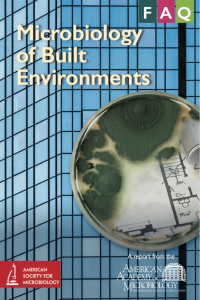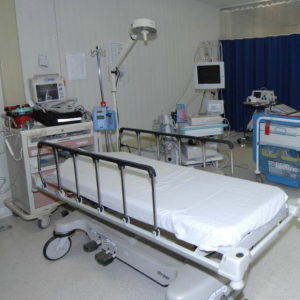As posted in this blog last week, an article was published in the ASM Journal Antimicrobial Agents and Chemotherapy on May 26 that describes the first discovery in the United States of mcr-1 gene, responsible for colistin resistance, in E. coli in a patient with a urinary tract infection. Colistin is considered an antibiotic of last resort because, …
Our group here at the City University of Hong Kong is interested in looking at microbial communities in built environments (BEs) of various sorts, including subways and residences. We have recently come up with a review article describing how outdoor and indoor occupants help shape a potential global BE “pan-microbiome,” the microbiome that encompasses BEs around the globe, which …
Microbes in the house Urban Dust Microbiome: Impact on Later Atopy and Wheezing – Christina Tischer – Environmental Health Perspectives (OA) Investigations in urban areas have just begun to explore how the indoor dust microbiome may affect the pathogenesis of asthma and allery. We aimed to investigate the early fungal and bacterial microbiome in house dust …
About half the human population now lives in urban environments. In 2008, populations of more developed nations were about 74% urban, while about 44% of residents of less developed countries lived in urban areas. It is projected that 70% of the world population will be urban by 2050, with most urban growth occurring in less developed countries. While there …
Recent papers on microbes of the built environment. Microbes in the hospital Prevalence of Staphylococcus aureus from nares and hands on healthcare professionals in a Portuguese Hospital – Ana Castro – Journal of Applied Microbiology ($6 to rent, $38 to own) The main goal was to estimate the prevalence of methicillin-resistant S. aureus on hands and …
There is a report out from the American Academy of Microbiology that is based on the “Microbiology of the Built Environment” colloquium they hosted in September 2015. The report summary is below: Built environments are the structures that humans create to shelter from the outdoors and provide spaces for living, working, playing, and getting places. …
Today was an exciting day in the microbiology world with the launch of the White House OSTP National Microbiome Initiative in Washington, where the Who Is Who of microbiome research was gathered. Too bad I was not there! But I’ve compiled another set of nice papers and news articles on the microbiology of the built environment. Microbes in the City …
Two reviews came out recently by Mutius et al and Smits et al discussing the link between microbes and asthma. Sadly, they are not open access. Both reviews suggest that exposure to microbially rich environments helps build the immune response and inflammation systems. The Mutius et al paper drew from research conducted on urban environmental microbiology using DNA fingerprinting to characterize indoor …
An open access article entitled “Evaluation of disinfection efficiency in pet’s hospital by using chlorine dioxide” was recently published in Sustainable Environment Research. In this study, the authors investigated the efficacy of chlorine dioxide in reducing the concentration of bacteria and fungi in bioaerosols in an animal hospital. Chlorine dioxide is an effective disinfectant commonly …
Happy Mother’s Day! Here are your new papers on microbes of the built environment. Microbes in the house Assessment of Bacterial Communities in Thirteen Species of Laboratory-Cultured Domestic Mites (Acari: Acaridida) – Jan Hubert – Journal of Economic Entomology (WTH $39 for 1 day) House dust mites (HDMs) and stored-product mites (SPMs) of various species …



